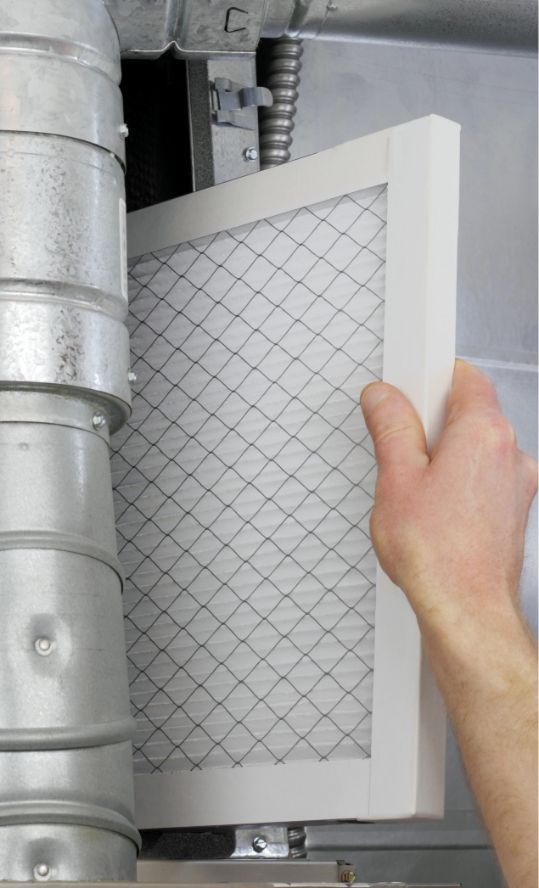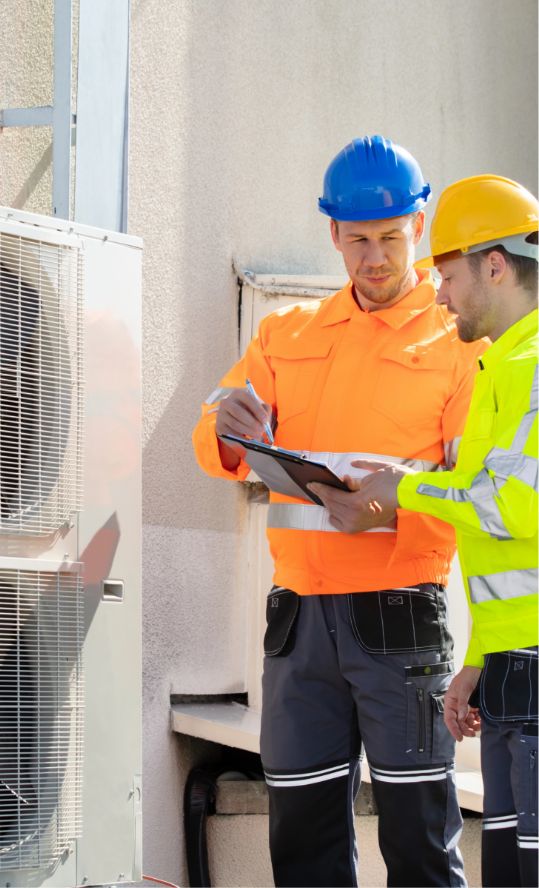
A Guide To Improving Indoor Air Quality At Home
Improving Indoor Air Quality In Your Homes
At BGE Indoor Air Quality Solutions, our purpose every day is to safely deliver clean, healthy indoor air environments for people, processes and places. We have been in business for over 50 years and are focused on distributing and manufacturing air filtration products and indoor air quality solutions. We are located in 7 locations across Western Canada with our head office and manufacturing center located in Edmonton, Alberta.
Together with our friends at the Better Breathers Club of The Northern Alberta Lung Association, we have produced an educational video highlighting ways that you can improve the indoor air quality and air filtration in your home.
FREQUENTLY ASKED QUESTIONS
Indoor air quality is especially important for those with respiratory issues. In the video below, we have provided answers to the most frequently asked questions we receive regarding the indoor air quality in homes. A written version of the answers can also be found below.
What causes indoor air pollution problems in your home?
There are many causes of indoor air pollution that can be introduced from both outside and inside of your home.
Outdoor pollution: This would consist of air that comes through your HVAC fan or through open doors and windows. This can include things in the environment like pollution, pollen, dead grass, snow mold, smoke, ash, etc. Other factors that may affect your outdoor air quality include the neighbourhood that you are living in and your exposure to industrial emissions, heavy traffic exhaust, or construction materials. Your neighbours may be great, but they may also be creating pollutants that are being brought into your home.
Indoor Pollution: Inside our homes, we can generate all sorts of pollutants from our bodies, our pets, cooking, candles, cleaning supplies, renovations, painting, furniture VOC’s etc.
What sort of pollutants should I be concerned about?
I like to categorize pollutants into four different categories:
- PM 2.5 is any particle 2.5 microns in size or less. The small size of these particles can travel and deposit on the surface of the deeper parts of the lungs which can cause inflammation and tissue damage which can lead to short and long-term effects on the lungs.
- PM 10 is any particle equal to or less than 10 microns in size. These particles are more likely to deposit on the surfaces in the larger airways of the upper lung and can cause irritation and inflammation. To give you some comparison, one piece of human hair is 50-70 microns in size.
- Volatile organic compounds or (VOCs) are emitted as gases from certain solids or liquids. VOCs include a variety of chemicals, some of which may have short and long-term adverse health effects. VOC’s can be found in things like paints and lacquers, paint strippers, cleaning supplies, pesticides, building materials and furnishings, office equipment such as copiers and printers, correction fluids and carbonless copy paper, graphics and craft materials including glues and adhesives, permanent markers, and photographic solutions.
- Carbon Dioxide or high Co2 is an indication that you don’t have great ventilation levels in your homes and less fresh air circulating through your spaces. It’s important to keep your home refreshed with air because higher ventilation rates in your home help to reduce the spread of airborne particles like the COVID-19 virus as well as improve your overall health and cognition.
How do indoor pollutants affect the health of my family?
Short-term effects of indoor pollutants can be coughing, sore throats, stuffy nose, sneezing, itchy, watery eyes, etc. Very low ventilation levels can make you sleepy and cause poor concentration. If you have improper ventilation, and your household members have a virus-like COVID-19, the airborne particulate matter can directly impact you and increase the risk of transmission. VOCs and PM 2.5 can also have long-term health effects as they can be deposited deeper in the lungs.
How do I know if there is an air pollution / air quality problem in my home?
The best way to understand your indoor air environment is to purchase a relatively inexpensive indoor air quality monitor that can measure temperature, relative humidity, PM 2.5, PM 10, VOCs, and CO2 levels. These monitors can be moved to locations around your home so that you can establish where the areas of concern may be and troubleshoot with real-time data.
What can I do to reduce pollutants?
The best way to reduce pollutants is to remove them altogether. We recommend avoiding the use of things like candles, incense, perfumes, diffusers if you are highly sensitive. Cooking is the biggest contributor to indoor pollutants so ensure you use your kitchen exhaust fans, open windows if possible, and run your HVAC system fan while you’re cooking. A good filter in your furnace system will help to improve air quality and help to protect you from outdoor and indoor pollutants.
How often should I inspect my furnace filter? What am I looking for?
It is recommended that you inspect your furnace filter once a month. For safety, remember to turn off your system before you pull out the filter. When you inspect your filter, you will want to see if it’s in good condition and not bent or damaged. You also want to see if there is significant particulate or dust build-up on the surfaces. If you notice a build-up of particulate matter or bridging across the filter, it’s time to change the filter. If the filter has significantly discolored, that’s a good indication that it’s time to change the filter.
I recommend that you look at changing your filters every season or every three months.
Does a high efficiency furnace change the type of furnace filter I need?
Furnaces have come a long way and if you have a new home or are replacing an older furnace, it’s quite likely that you will be getting a high-efficiency furnace. The trend that we’ve been seeing with high-efficiency furnaces is that they come with a larger filter housing with a 4 or 5” depth which is so great. The larger space allows for you to use thicker filters that have more surface area to capture particles. When you are considering your furnace filters, make sure that you review your system abilities and use the appropriate MERV-rated filter. If you have a filter that is too thick for your furnace, there is too much resistance for the air to flow through and you risk burning out your fan.
What is a MERV rating and why is it important?
MERV stands for Minimum Efficiency Reporting Values and is the filter’s ability to capture larger particles between 0.3 and 10 microns (µm). It’s a standard that has been developed by ASHRAE which is a society that sets standards for the heating, ventilation, air conditioning, and refrigeration industry. The value is helpful in comparing the performance of different filters. The higher the MERV rating, the better the filter is at trapping specific types of particles.
Depending on the filter, the MERV rating can range from 1-16. Most filters should have this rating and the manufacturer should have used an independent testing laboratory to test the filter for its MERV value. If the filter does not have a MERV value on their filter, you can visit the filter manufacturer’s website where they should have the MERV value posted.
What is the right MERV rating for my home?
Since the COVID-19 pandemic, the ASHRAE has recommended MERV 13, or the highest level achievable. The reason for this is that MERV 13 is at least 50% efficient in trapping 0.3 micron-sized particles. Sounds great, but your system may not be able to handle a MERV 13 filter. As MERV increases efficiency in removing particles it also increases the resistance to airflow. So, if your system can’t handle a MERV 13 filter, we recommend the minimum to be a MERV 8. If you are unsure what would be optimal for your system, we recommend consulting with your mechanical contractor or filter supplier to help navigate this with you.
What is the best type of filter to buy?
Hands down, the best type of filter to buy is a filter that fits properly. My dad, who started our business over 52 years ago ingrained the following mantra into our heads: “If it doesn’t fit, it doesn’t filter”. You can buy the best, most expensive filter on the market but if it doesn’t fit, it doesn’t filter properly. For example, a MERV 13 filter that has a ½” gap can be less efficient than a MERV 8 filter because air is getting around the filter and through your system.
Would a HEPA filter in my home be an improvement?
A HEPA filter is a high-efficiency particulate filter that stops 99.97% of particle matter 0.3 microns. A HEPA filter would improve everybody’s indoor air but unfortunately, not many forced air systems or furnaces in homes can handle a HEPA filter. The reason for this is because the HEPA filter creates tremendous resistance to airflow and could burn out your furnace fan. As an option, there are room air purifiers that contain HEPA filters and can enhance the air quality in your home in addition to your furnace filter. Supplement with a room air purifier if possible.
What are some ways I can improve indoor air quality if I live in an apartment or other multi dwelling unit?
If you don’t have a forced-air system, use your bathroom exhaust fan and your kitchen hood exhaust to purge your space. Open your windows if your community has clean air outside. You can also supplement with a room air purifier with a MERV 13 or even a HEPA filter.
The air quality outside has been poor lately. What should I do to prevent it from entering my home?
When the air quality outside is poor, keep your windows and doors closed. Upgrade your furnace filtration to MERV 13 filter if possible. You can also introduce room air purifiers with HEPA and Carbon filters inside that will help to augment the poor air quality. Carbon filters help to remove odors from the air.
What can I do to improve ventilation in my home? Why is it important?
There are a few ways to improve the ventilation in your home. Run your fan on your HVAC system continuously which will refresh your spaces by bringing in more outdoor air increase the air changes throughout your home. You can also use your kitchen and bathroom fans to exhaust the air if you’ve generated indoor pollutants through cooking, candles, incense, perfumes, cleaning solutions. If you are in a relatively clean neighbourhood and you are okay with the outside temperature, you can also open your windows to let in outdoor air to purge your space.
We hope that we have answered your questions regarding indoor air quality in the home. If you have any additional questions, please fill out the form below and we will be sure to reply.
Thank You!

Your Partners In Clean Air
Call 780-436-6960 today to speak with a BGE Clean Air Advisor.




